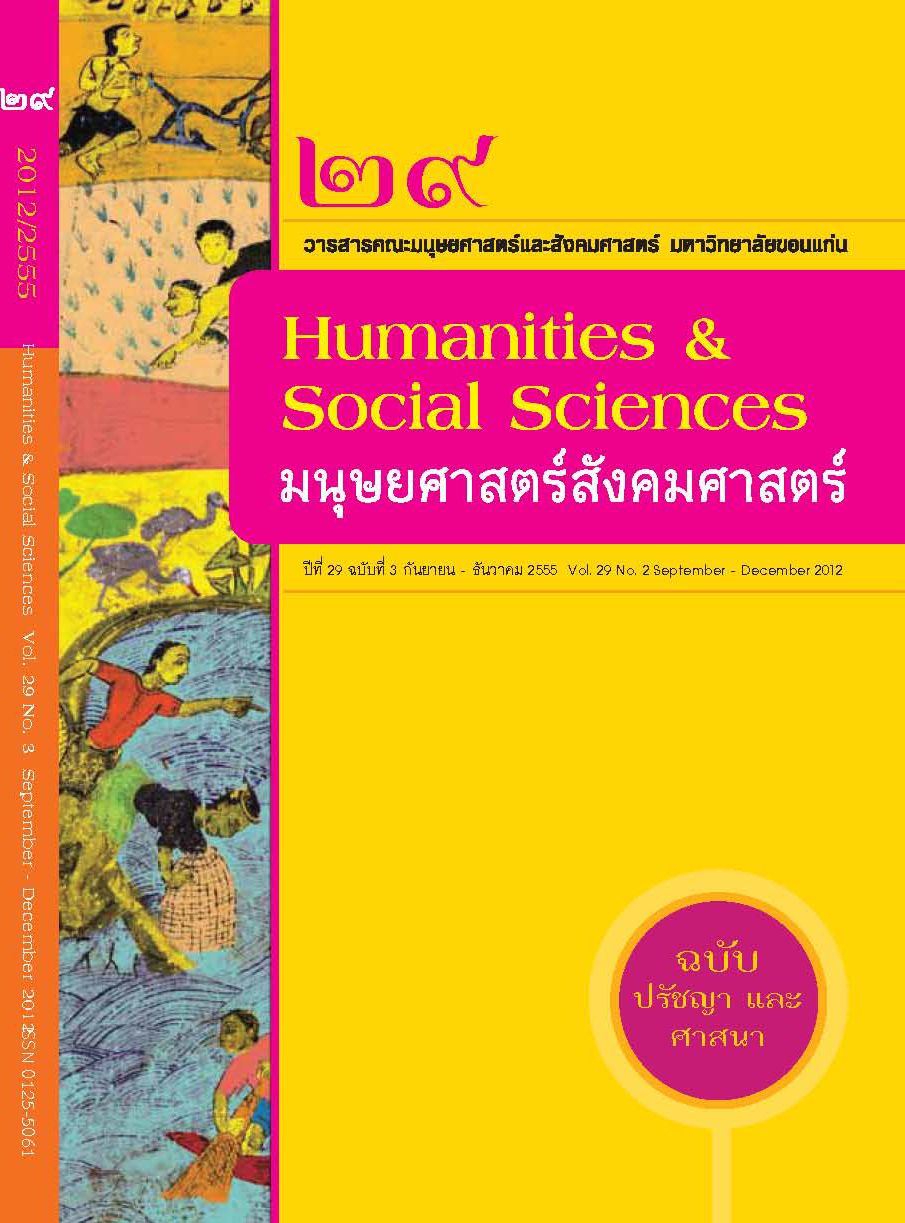วิธีคิดหลักการพุทธศาสนาสู่ทัศนะพุทธปรัชญา
Keywords:
หลักการพุทธศาสนา, พุทธปรัชญาAbstract
บทคัดย่อ
บทความนี้มุ่งศึกษาวิธีคิดหลักการพุทธศาสนาสู่ทัศนะพุทธปรัชญา ซึ่งผู้เขียนได้เสนอกรอบแนวคิดเพื่ออธิบายวิธีคิดดังกล่าว โดยเริ่มที่ Story ซึ่งเป็นชื่อเรื่องหรือหัวข้อ จากนั้นก็นำมาเป็นหลักฐานสำหรับศึกษา และหลักฐานที่ปรากฏในคัมภีร์ทางพุทธศาสนานี้เองที่เป็นจุดสิ้นสุดของหลักการของพุทธศาสนา ตัวอย่างเช่น คำว่า โอฆะ ในข้อความว่า ข้าแต่พระองค์ผู้นิรทุกข์ พระองค์ข้ามโอฆะได้อย่างไร ความหมายของคำว่าโอฆะเป็นที่รู้กันระหว่างพระพุทธองค์กับเทวดา โดยไม่มีการอธิบายและตีความแต่อย่างใด แต่ต่อมาพระอรรถกถาจารย์ได้อธิบายคำศัพท์ว่าโอฆะออกไปหลายนัย จุดนี้ถือว่าเป็นจุดเริ่มต้นของพุทธปรัชญาแล้ว หรืออีกตัวอย่างคือ คำว่า จิต ซึ่งเป็นสภาวะรับอารมณ์ แต่ได้มีการแปลความในรูปวิเคราะห์คำศัพท์ หรือใช้วิทยาการสมัยใหม่มาอธิบายและอ้างอิง ด้วยการนำไปวิพากย์และตีความพร้อมกับการวิเคราะห์และสังเคราะห์ตามหลักการของการใช้เหตุผล จนก่อให้เกิดองค์ความรู้ใหม่และเป็นหลักฐานใหม่ ซึ่งสามารถนำไปศึกษาและวิจัยต่อไปได้
คำสำคัญ : หลักการพุทธศาสนา, พุทธปรัชญา
Abstract
This academic paper aims at considering a method in analyzing some principles in the Buddhist thought and then synthesizing into the Buddhist philosophical framework by means of representing a concept to describe such methods. Beginning with a ‘story’ that contains a general topic of Buddhist legendary, then making use of that as a supportive evidence for the study. Positively, the evidence in the Buddhist scripture is the reasonable conclusion of Buddhism. For example, the term Ogha from a massage, “Buddha! How do you across Ogha?” The meaning about this term, Ogha here is only understood by the Buddha and heavenly beings, there is no any explanation about this term in the Buddhist scripture. In fact, it is the work of commentators that describe a word, Ogha in many aspects. Here, it is the beginning of the Buddhist philosophy. Another example is the term, “Citta” it is a door of receiving emotion and all mental experience but there is no interpretation of this term in an analytical pattern or in the use of modern science to describe and refer to it. Collectively, the main objective of this work is to analyze Buddhist legendary (in early Buddhism) then synthesizing in accordance with the framework of modern scope of rationalization in questing to form a new frontier of Buddhist further research and study.



